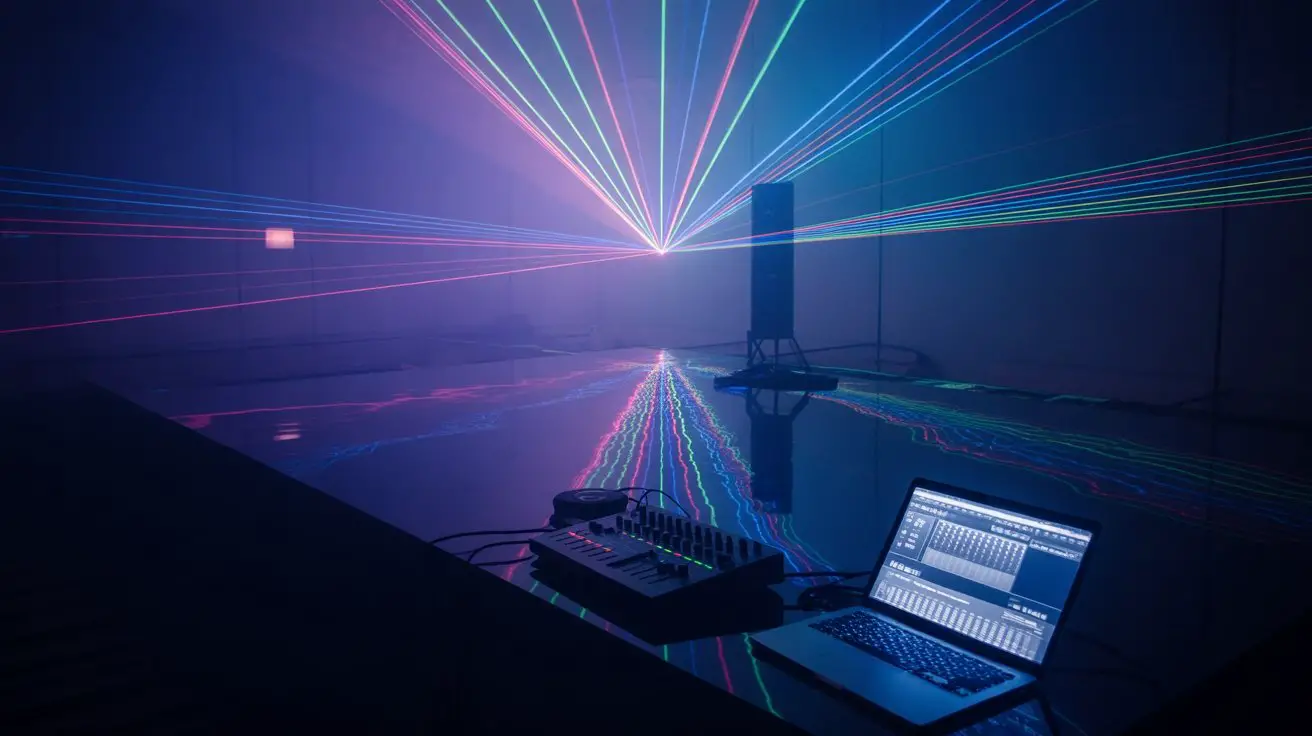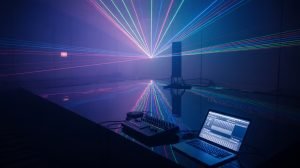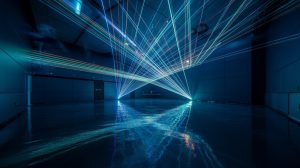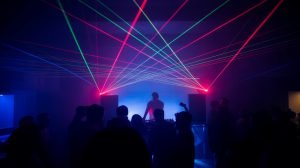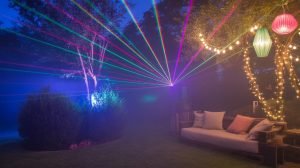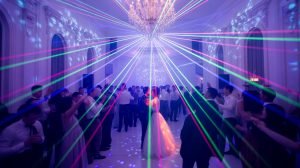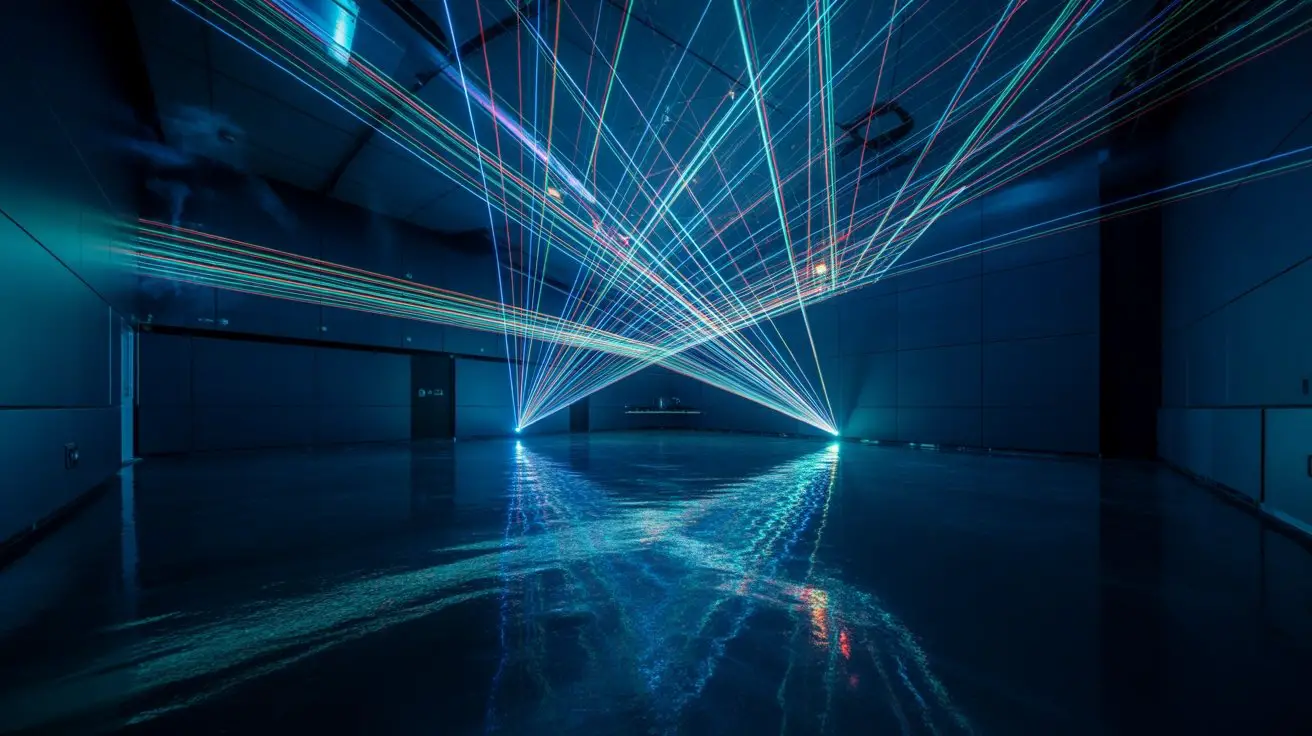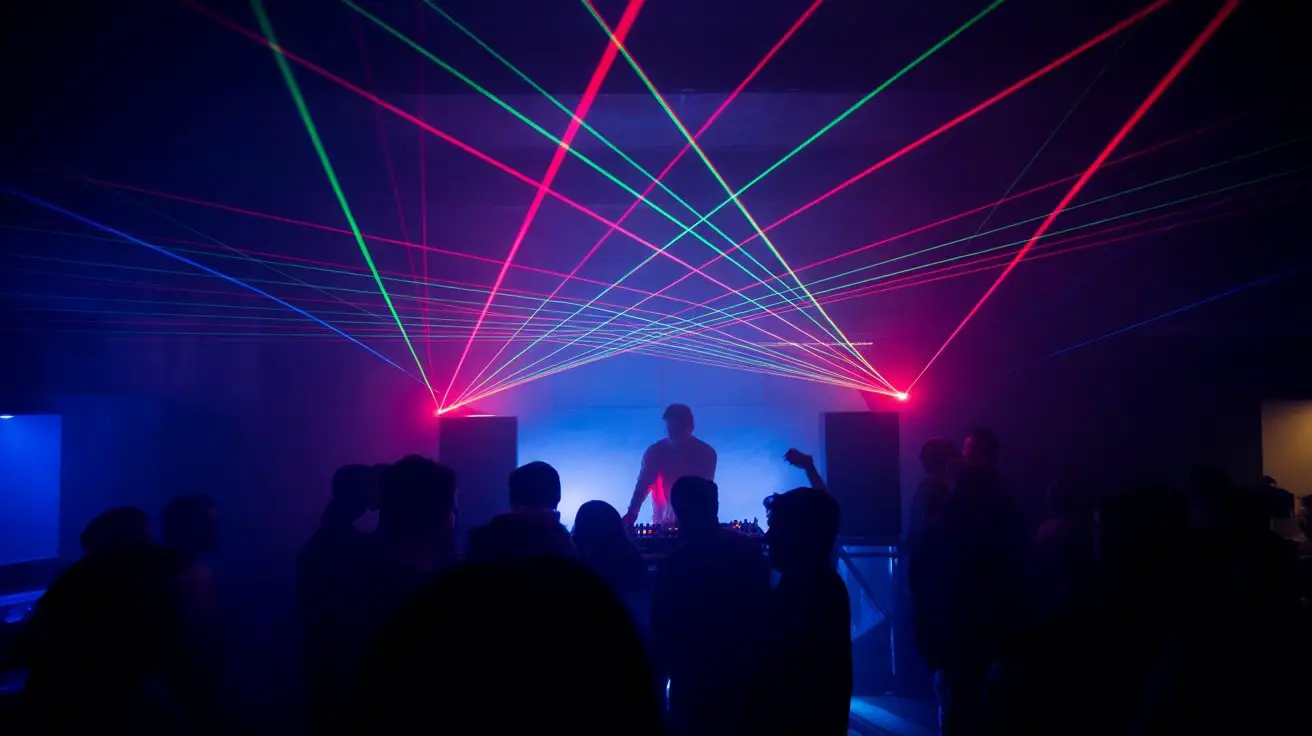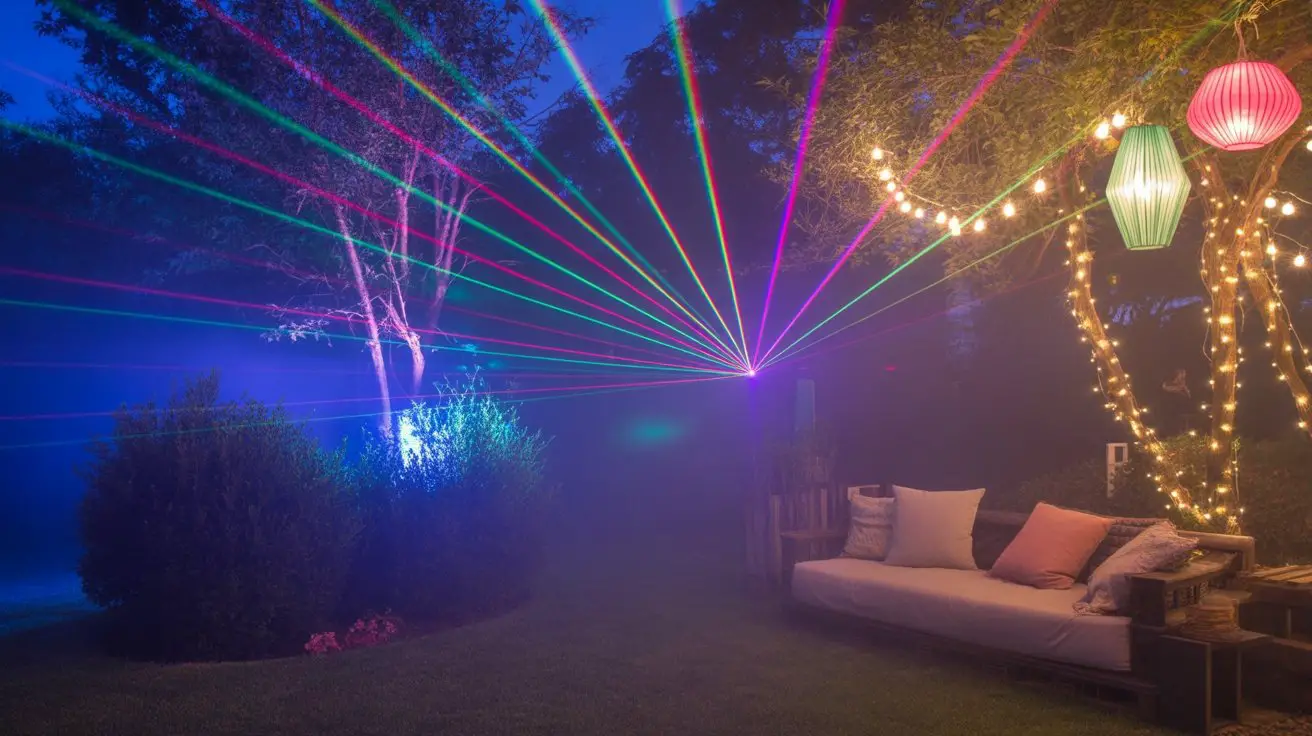Professional lighting designers report that 73% of audio-visual synchronization failures stem from improper signal routing and inadequate beat detection algorithms. You’ll need to establish clean audio pathways between your source material and laser controllers while configuring FFT analysis parameters that respond accurately to your music’s frequency spectrum. The difference between amateur flickering and professional-grade synchronization lies in understanding how your DMX addressing interacts with real-time audio processing, and there’s a specific sequence of calibration steps that determines whether your setup achieves frame-perfect timing.
Understanding Sound-Activated Laser Systems and Auto Mode Features
Since most modern laser projectors incorporate sound-activation technology, you’ll find two primary synchronization methods: built-in microphones that detect ambient audio levels and direct audio input connections that process line-level signals.
Microphone-based systems analyze frequency peaks and amplitude changes to trigger pattern variations, while line-input systems provide cleaner signal processing with reduced interference.
Auto mode functions operate through preset algorithms that cycle through programmed sequences based on detected beat patterns. You can adjust sensitivity thresholds to fine-tune response levels, preventing false triggers from background noise.
Most units feature gain controls for microphone input and level adjustments for line connections. DMX-compatible models offer expanded control through sound-to-light converters, enabling complex multi-fixture synchronization across different frequency ranges and dynamic response parameters.
Choosing the Right Laser Equipment for Music Synchronization
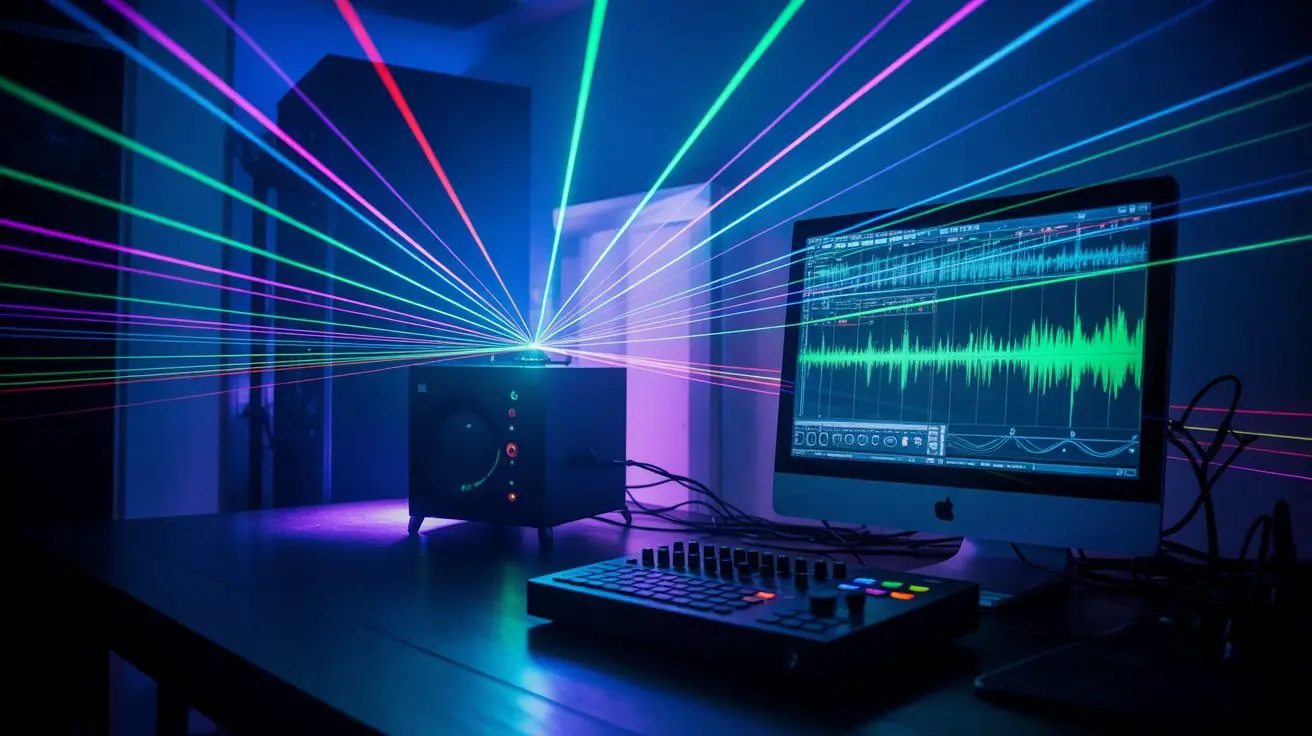
When selecting laser equipment for music synchronization, you’ll need to evaluate three critical specifications: frequency response range, signal processing capabilities, and connectivity options.
Look for fixtures with 20Hz-20kHz frequency response to capture full audio spectrum detail. Digital signal processors (DSPs) should offer adjustable gain controls, frequency band isolation, and sensitivity thresholds.
Choose units with multiple input types: XLR for professional audio chains, 3.5mm for consumer devices, and DMX512 for lighting control networks. ILDA-compatible projectors provide precise beam control through dedicated software interfaces.
Prioritize fixtures with real-time FFT analysis for accurate beat detection and spectral separation. Variable attack/release times prevent erratic triggering during audio transients.
RGB+UV laser modules deliver broader color mixing capabilities than single-wavelength systems, enabling more dynamic visual responses to musical content.
Setting Up DMX Controllers and Software for Advanced Programming
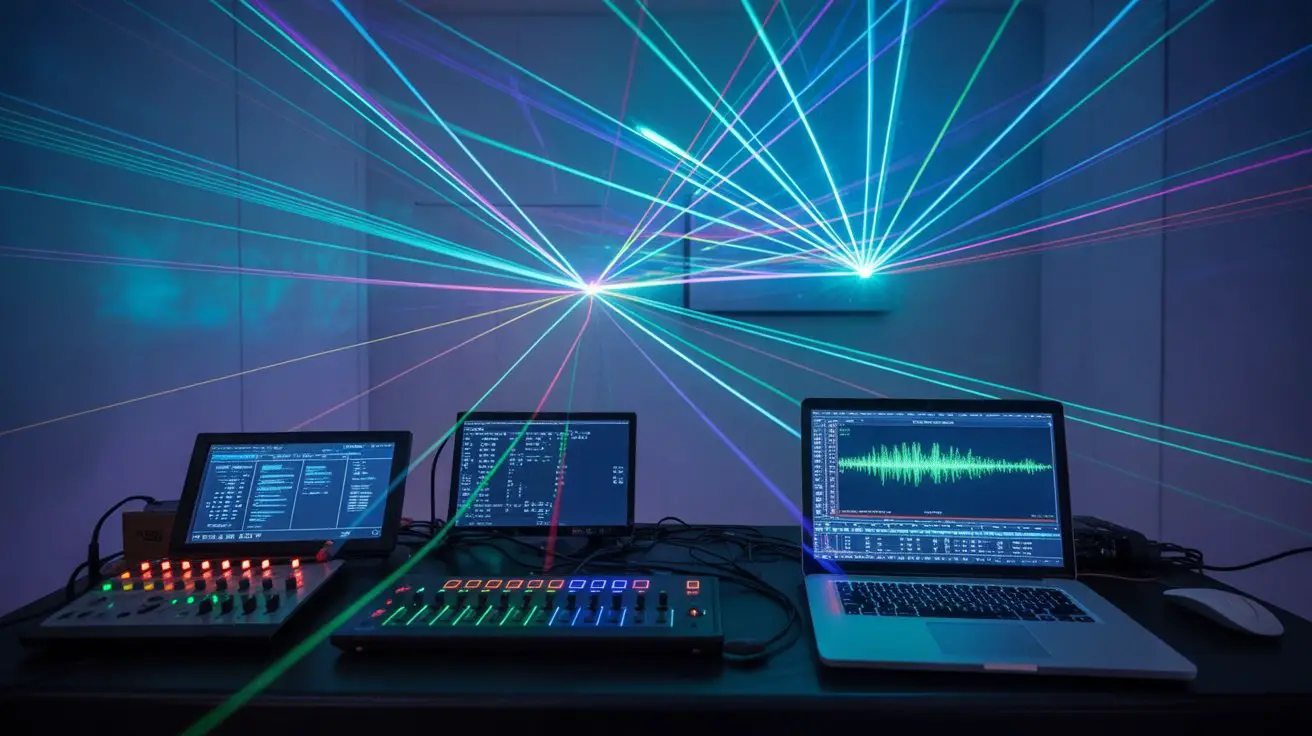
DMX512 controllers serve as the command center for your laser synchronization system, requiring proper address mapping and channel assignment before audio integration can begin. You’ll configure each laser fixture with unique DMX addresses, typically starting at address 001 and incrementing by channel count. Your controller software maps these addresses to specific functions like pan, tilt, color selection, and pattern generation.
| Channel | Function | Value Range | Signal Type | Response |
|---|---|---|---|---|
| 1-2 | Pan/Tilt | 0-65535 | 16-bit | Smooth |
| 3 | Color Wheel | 0-255 | 8-bit | Stepped |
| 4 | Pattern | 0-255 | 8-bit | Instant |
| 5 | Strobe Rate | 0-255 | 8-bit | Variable |
Programming software like Madrix or Pangolin QuickShow translates audio frequencies into DMX values, creating real-time synchronization between beats and laser movements.
Programming Beat Detection and Tempo Matching Techniques
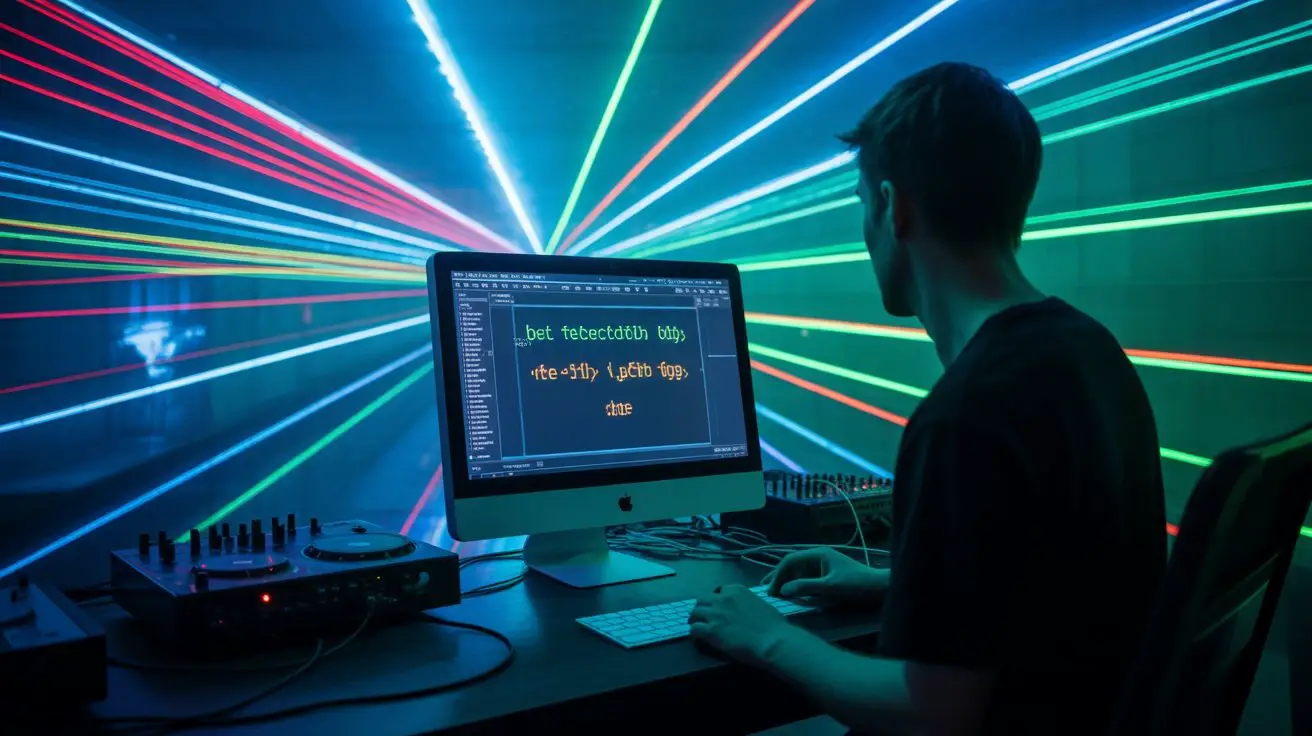
Although modern laser control software can detect beats automatically, you’ll achieve superior synchronization by manually configuring detection algorithms to match your audio source’s specific characteristics.
Set your audio input gain between -6dB and -3dB to prevent clipping while maintaining strong signal detection. Adjust the frequency band filters—typically 60-200Hz for kick drums and 2-8kHz for snares—to isolate rhythmic elements. Configure the beat detection threshold at 70-85% sensitivity to avoid false triggers from ambient noise.
Enable adaptive tempo tracking for songs with variable BPM, allowing 5-10% deviation from the detected baseline. Use the attack time setting (10-50ms) to fine-tune trigger responsiveness.
Monitor your software’s beat confidence meter; readings below 80% indicate you need threshold adjustments. Test synchronization using steady 4/4 time signatures before attempting complex polyrhythmic patterns.
Creating Custom Light Patterns for Different Music Genres
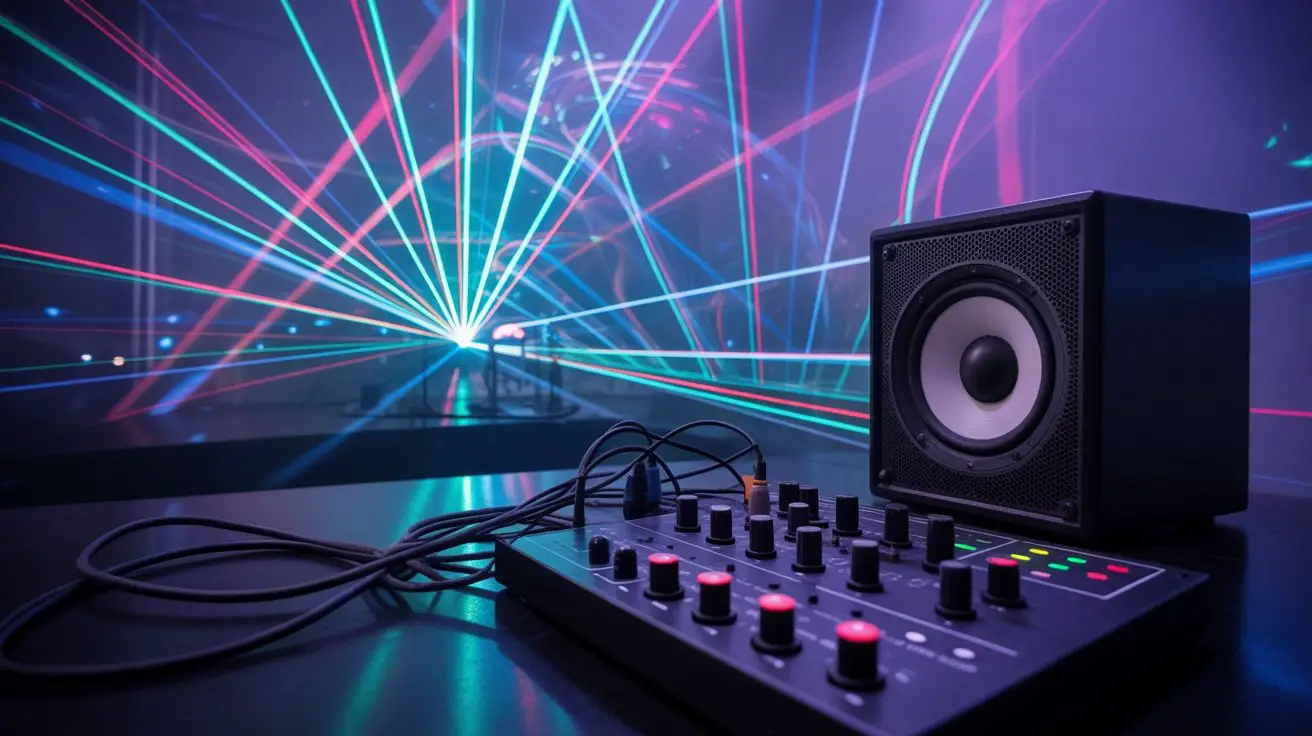
Since each music genre possesses distinct sonic fingerprints, you’ll need to configure your laser patterns to match specific frequency characteristics and rhythmic structures.
EDM demands tight synchronization with kick drums at 60-180 BPM, utilizing strobe effects triggered by high-frequency transients above 8kHz.
Rock patterns should respond to snare hits at 2kHz-4kHz while tracking guitar power chords in the 200Hz-800Hz range.
Jazz requires looser timing windows with patterns following brushed snares and cymbal crashes in the 10kHz+ spectrum.
Classical music benefits from sustained beam movements tracking symphonic dynamics across the full frequency spectrum.
Configure your DMX controller’s frequency bands to isolate genre-specific elements: sub-bass filters for hip-hop, mid-range emphasis for vocals, and treble sensitivity for percussion-heavy genres.
Troubleshooting Common Synchronization Issues and Timing Problems
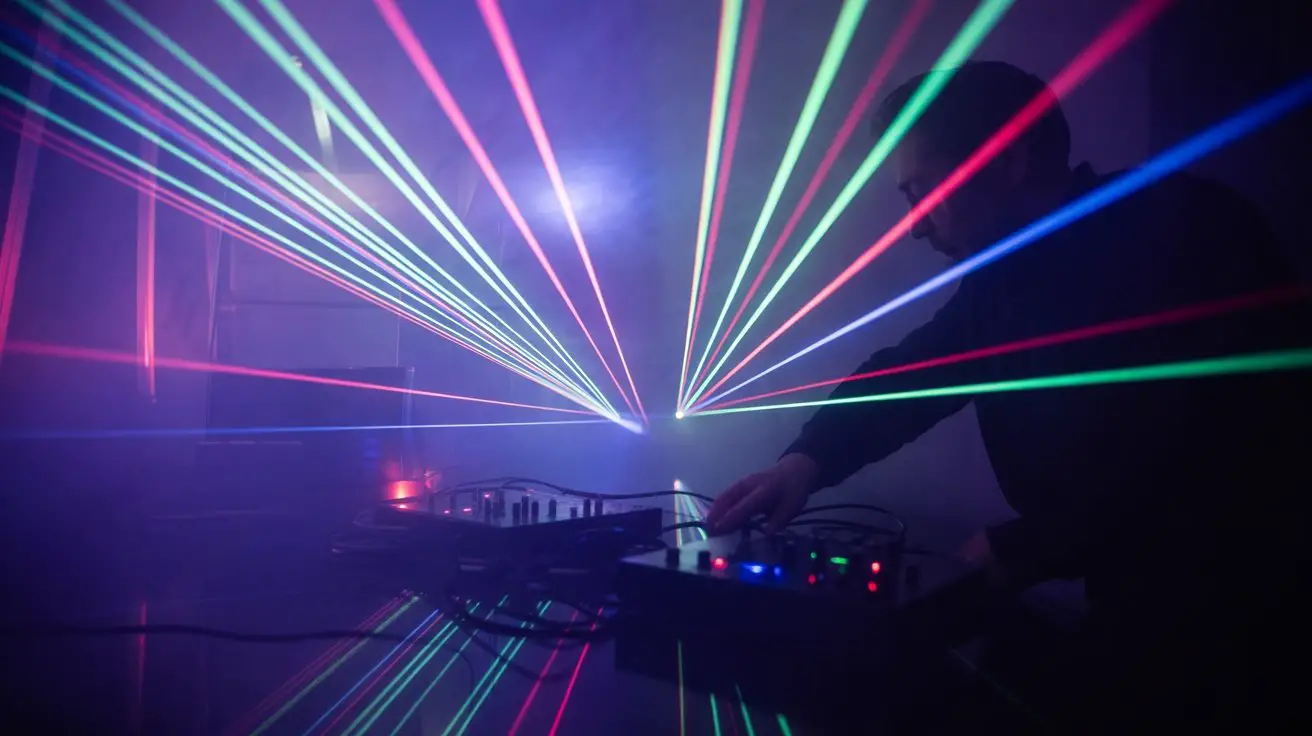
When your laser lights drift out of sync with the music, the culprit typically lies in signal chain latency or improper audio input calibration.
Check your DMX controller’s buffer settings first—reduce buffer sizes to minimize delay. Verify your audio interface’s sample rate matches your software’s project settings; mismatched rates cause timing drift.
Test your signal path using a click track or metronome. If lights lag consistently, adjust the global offset in your lighting software.
USB connections introduce more latency than XLR or TRS inputs—switch to analog connections when possible.
Monitor CPU usage; overloaded processors cause dropouts and sync issues. Update your lighting software and audio drivers regularly.
Finally, calibrate your system using known BPM tracks to establish baseline timing accuracy.
Frequently Asked Questions
Are There Legal Restrictions on Using Laser Lights at Public Events?
You’ll face FDA regulations requiring variance permits for Class IIIb and IV lasers exceeding 5mW output power. Local fire marshals often mandate safety officers, audience scanning restrictions, and emergency shutdown protocols for public venue installations.
How Much Does a Complete Laser Light Synchronization System Typically Cost?
Professional projection packages typically cost $2,000-$15,000 depending on specifications. You’ll need DMX controllers, synchronized software, quality diode units, and safety interlocks. Budget systems start around $800, while broadcast-grade installations exceed $50,000.
Can I Sync Laser Lights to Streaming Music From Spotify or Apple Music?
You can’t directly sync laser lights to Spotify or Apple Music due to digital rights management. You’ll need audio interface hardware that captures analog output signals from your streaming device’s headphone jack or line output.
What Safety Precautions Should I Take When Operating Laser Lights Around People?
Even small consumer lasers can cause permanent eye damage. You must use FDA-compliant Class 1 or 2 lasers, position beams above head height, install beam stops, and never aim directly at people’s faces.
Do I Need Special Permits or Certifications to Use Laser Equipment Professionally?
You’ll need FDA variance permits for Class IIIb/IV lasers in public venues. Most states require certified laser safety officers for professional operations. Check local regulations since municipalities often mandate additional licensing for entertainment laser displays.
Conclusion
You’ve mastered the delicate dance between audio and photonic output through proper signal chain management and DMX addressing. When your laser fixtures experience “timing challenges,” you’re simply dealing with buffer overflow or inadequate FFT windowing parameters. Don’t let these minor setbacks discourage your programming efforts—they’re learning opportunities in disguise. Your sound-to-light translation engine will achieve millisecond-precision synchronization once you’ve fine-tuned gain staging, optimized your controller’s sample rate, and eliminated signal path latency issues completely.

